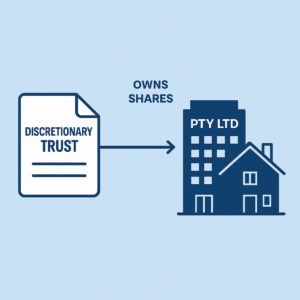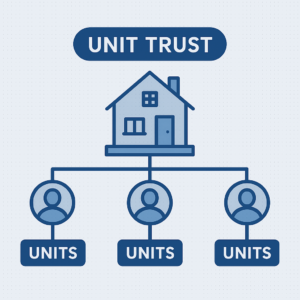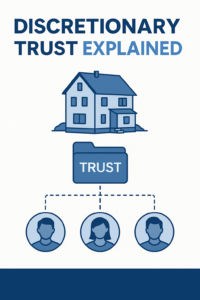How Trusts Can Help Australian Families Accumulate Wealth
In Australia, trusts are a powerful tool for families looking to build and protect wealth. By using a trust, you can take advantage of tax benefits, protect your assets, and create a long-term financial plan for future generations. This article explores how trusts work and provides real-world examples of how Australian families can use trusts to accumulate wealth.
What is a Trust?
A trust is a legal structure where one person, known as the trustee, holds and manages assets on behalf of others, called the beneficiaries. Trusts are commonly used in Australia for holding assets such as property, shares, and cash.
The most commonly used trusts in Australia are discretionary trusts (also known as family trusts) and unit trusts. Discretionary trusts allow the trustee to decide how to distribute income and capital among beneficiaries, giving greater flexibility and tax planning opportunities.
How Trusts Offer Tax Benefits and Asset Protection
Trusts provide two key advantages for Australian families:
- Tax Flexibility: Income earned by assets in a trust can be distributed to beneficiaries in lower tax brackets, potentially reducing the overall tax liability.
- Capital Gains Tax (CGT) Discounts: If an asset, such as property, is sold after being held in a trust for more than 12 months, the trust can benefit from a 50% CGT discount, resulting in significant tax savings.
- Asset Protection: Assets held within a trust are generally protected from creditors and legal claims, making them particularly useful for safeguarding family wealth, especially for business owners or professionals.
Example 1: Distributing Income to Minimise Tax
Let’s say you set up a discretionary family trust that holds an investment property, which generates a rental income of $50,000 per year.
- You, the primary income earner, are in the 45% tax bracket.
- Your spouse has a lower income and is taxed at 19%.
- Your two children (aged 15 and 17) can receive up to $416 tax-free before higher tax rates apply, but any income above that amount is subject to penalty tax rates.
By distributing the rental income through the trust, you can allocate more income to your spouse and less to yourself, thus lowering the family’s total tax liability:
- Spouse: Receives $30,000 and pays $5,700 in tax at the 19% rate.
- You: Retain $20,000 of the income and pay $9,000 in tax at the 45% rate.
If the income were kept entirely in your name, you would pay $22,500 in tax. However, by using the trust, the total tax paid is $14,700, saving your family $7,800 in taxes each year.
Example 2: Capital Gains Tax Savings on Property Sale (University Students as Beneficiaries)
Now let’s assume your family trust holds an investment property purchased for $500,000, which is sold 10 years later for $800,000. This results in a $300,000 capital gain. Because the property was held for more than 12 months, the trust is eligible for a 50% CGT discount, reducing the taxable gain to $150,000.
In this scenario, the family consists of you, your spouse, and two adult children who are university students not working full-time. Here’s how the trust can distribute the capital gain to minimise tax:
- You, the main income earner, are taxed at 45%.
- Your spouse is in a lower tax bracket, paying 19%.
- Your two adult children (aged 20 and 22) are full-time university students with minimal income. As students with low income, they are likely to be in the 19% tax bracket or below, and may even fall under the tax-free threshold of $18,200.
The taxable gain of $150,000 can be distributed as follows:
- Spouse: Receives $50,000 and pays $9,500 in tax (19% tax rate).
- Adult Child 1: Receives $50,000 and pays no tax, assuming they fall below the tax-free threshold.
- Adult Child 2: Also receives $50,000 and, like Adult Child 1, pays no tax.
In this case, the total tax paid on the $150,000 capital gain would be $9,500. By distributing the gain across lower-income beneficiaries, you save a significant amount of tax compared to paying it all at your marginal rate. If the property were held in your name, you would have paid $67,500 in tax (45% of $150,000), so using the trust saves the family $58,000.
Others
-
October 20, 2025 Buying Property Under Your Personal Name in Australia: Pros and Cons
-
October 18, 2025 Service Trust Business Structure in Australia




